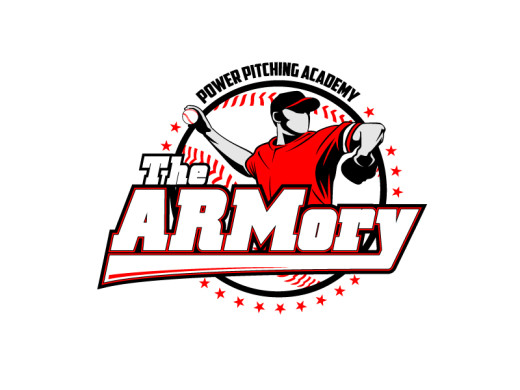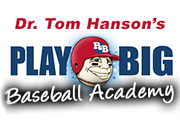Welcome to Pitching Coaches Anonymous
My name is Randy Sullivan.
I’m pitching coach.
And I am a confirmed talkaholic.
I’ve wasted too many coaching years telling kids how to do things, then telling them how to do them better. I have coached some amazing kids over the years and, thank goodness, many of them have survived, and even thrived, despite my “assistance”.
You see, in the past 5-7 years, I have come to learn that in the science of motor learning and human performance, the words get in the way. Very few people learn movement skills via cognitive or auditory cues. Movement patterns are most effectively learned through kinesthetic feel. Verbal cues (either from a coach, or a cue a player give to him self inside his on head) interfere with learning and suppress optimal performance.
The research shows that when learning a motor skill that does not involve time pressure, verbal cues might be ok, but in activities like pitching, or hitting, or any other task with a time constraint, cues are useless and are usually detrimental to performance.
Excessive verbal cueing is a common coaching mistake, and I was as guilty as anyone.
We’ve all heard them:
“You’re flying open.”
“Find your balance point.”
“ Stay tall… but use your legs.”
Wait… what?
In motor learning and performance, these types of cues aren’t worth the oxygen they consume.
It’s Tough.
I know.
We want to help, but we can’t keep our mouths shut.
Even my own staff, and the students I train don’t always get it.
A couple of days ago, we were between classes, and 4-5 of our interns were grinding away, getting their work in. Pablo was using the Rev Fire Pro to check the spin rate on his slider. Another intern, Reeves, was helping by manning the device, recording and reporting the data, and providing encouragement… and verbal cues.
I watched for a little while. Pablo wasn’t pleased with the spin rate he was getting, 28-29 RPS on each pitch. The two were talking it over and problem solving, which was good, but I felt like they were being way to cognitive in their approach.
I stopped all training, turned down the music, and said, “Guys! Listen! Stop with all the verbal cues and cognitive input. It doesn’t work. All you can do as an instructor is to provide the overall goal of the activity. Goals are good. Cues are not. Here’s the difference: A goal tells the athlete what to do. A cue tells him how to do it. Goals improve performance and accelerate learning. Cues get in the way… Pablo, what do you want the spin rate on this next pitch to be?”
“I’d like it to be around 32 rps.” he replied.
“Ok, then on this next pitch make the reading on the little machine Reeves is holding say 32!”
Pablo gave me a sideways glance and said, “OK” and he made his pitch.
When the ball hit the mat 60 ft away, we all looked at Reeves.
He gave a sheepish grin and said, “32.6”.
That left every guy in the room shaking his head. Then Charlie, another intern said something like, “That one looked better too. It looked like you used your legs a little more.”
I interrupted, “OK. That brings us to the next point. The roll of the instructor is to help the athlete determine a clear, objective and measurable goal for the activity, and then provide objective and measurable feedback – in motor learning that is called ‘Knowledge of Results’.
For us, this summer, knowledge of Results means one or more of a few things: 1) Did it hit the target? If not, exactly where did it miss. 2) What was the radar gun reading? 3) What was the spin rate? 4) What was the Motus Approach Angle and release height? and 4) Did it hurt? That’s it.
Then when we like the results of the rep, we intentionally add emotion as the accelerant for myelination.
That’s different from what they call ‘Knowledge of Performance.’ Knowledge of Performance offers a subjective value judgement about the quality of the movement, like ‘that one looked real good.’ Or ‘It looked like you released that one further out front.’ The research tells us that Knowledge of Results facilitates learning. Knowledge of Performance gets in the way.”
Everyone nodded in agreement as if they understood, then Pablo stepped up to try a new grip.
Just before he started his windup, I head Reeves say, “Snap the heck out of this one.”
I said, “Reeves! Did you just give verbal cue right after I gave that long talk on not giving verbal cues?”
“Touche’.” He said with a wry grin.
Next I looked to Sean’s lane. A salty ARMory vet, I could see him diligently working on something. He was laser locked and focused on what he was doing. I could see him going through his movement pattern, and then thinking, and then doing it again. He would throw a pitch, and when it missed high to his arm side, a look of frustration would come across his face. I watched for a while, and finally felt like it was time to intervene.
I eased over to his position and said, “Sean, what are you working on?” He paused and responded, “Well, I have this postural disconnect that I think is being caused by my glove side, and I’m trying to fix it.”
“And how are you going about that?” I asked.
“Well, I’m kind of just thinking about it as I go through the motion…” he said.
So I stopped the music again and said, “Listen guys! No verbal cues! It doesn’t matter it comes from me or from you internally, it’s still a verbal cue. Self-talk that tells you how to do something is a verbal cue, and it gets in the way. Self-talk that tells you what to do is a goal, and that is great! See the difference?”
Everyone laughed and nodded.
We then tilted the mound 30 degrees to Sean’s glove side, and he threw with no conscious thought. The ball hit his glove side, thigh-high target spot on and I shouted, “Bingo!” and everyone cheered.
The lesson for me and every other coach or instructor is this:
As a coach, my role is to provide the overall goal and then offer objective knowledge of results. If there is a mechanical inefficiency, identify it, then design a “drill” to elicit the necessary change. For the record I hate calling them drills, because there is always more than one way to perform them, and a drill just sounds so much like…a drill. “Do it this way every time… now do it again)”. I prefer to think of “drills” as Self Organization Experiments.
With regard to verbal cues, I’m sure we’ll have to address this concept repeatedly as the summer progresses, but that is what we will be relentlessly pounding on from here on out.
It won’t be easy, even for me.
I’ll probably slip up and fall off the “no talk” wagon at some point.
But for now my 12-step program is complete and I have been “talk free” for 1 day and counting.
My name is Randy Sullivan.
I am a pitching coach.
And I am a talkaholic.
Anyone want to join me in my quest for coach-talk free sobriety?
Welcome to Pitching Coaches Anonymous










Leave a Reply